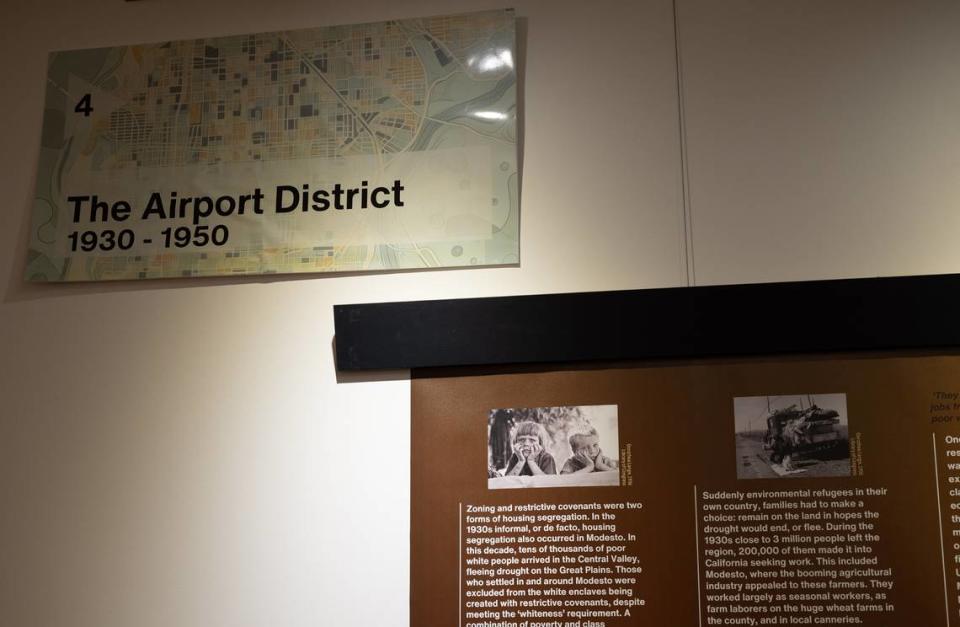College students dive into overlooked history of Modesto. What role did The Bee play?
Anti-Chinese advertisements, racist property deeds and old surveys. Students at Modesto Junior College uncovered these in their search for Modesto’s lost history.
Seven students, through an internship, spent about a year researching Modesto’s history between 1870 and 1950. They dug through newspaper archives, sorted through a stack of addresses and reached out to people who could provide insight into the overlooked history.
Among their discoveries was information on Modesto’s long-ago Chinatown, the resettlement of Dust Bowl refugees in the airport neighborhood and a history marked by years of segregation.
Much of this history was documented in The Modesto Bee’s reporting during this time.
“We thought, what if we get students to do history research themselves, digging into archives, figuring out what our actual history is here and then having that history enrich our understanding of who we are, who we were, where we came from and maybe even giving voice to those who have not had their voices heard,” said Eva Mo, a history professor at MJC. “And so that was sort of the beginning of our project.”
Their research is showcased on the walls of Founders’ Hall, located on the MJC East Campus, 435 College Ave. There are plans for students to soon lead guided tours of the exhibit.
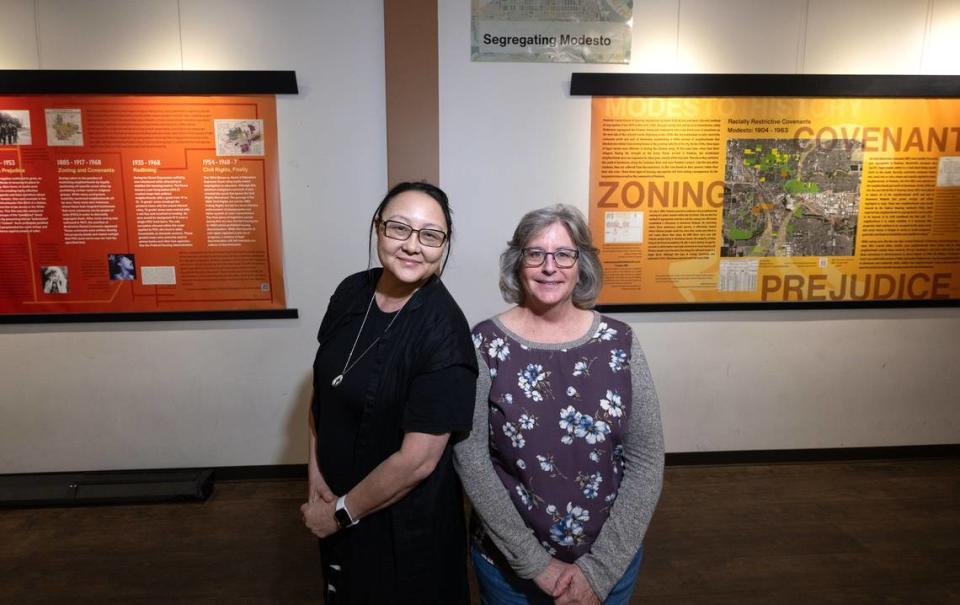
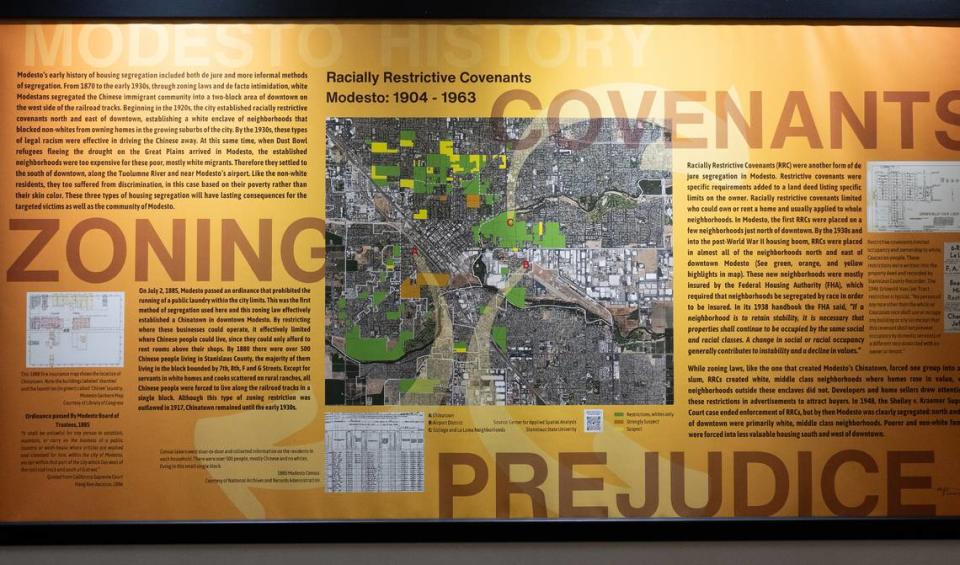
The exhibit features a timeline alongside the students’ findings, all presented through panels crafted by the students themselves. Their project was structured around Richard Rothstein’s book, “The Color of Law: A Forgotten History of How Our Government Segregated America.”
Mo and fellow history department Professor Eileen Kerr worked with the students and oversaw their research. The history department aims to develop a course inspired by the internship.
Additionally, they plan to relocate the exhibit to the McHenry Museum for a temporary showcase. There’s also consideration for integrating it into a forthcoming ethnic studies course at Modesto City Schools.
Kiarra Dixon, a student who worked on the project, said she was surprised by these neglected aspects of Modesto history. Following a panel presentation on the project, many attendees approached her, revealing that they, too, had been unaware of these historical chapters, she said.
“As I continued to read and learn more about discriminatory acts towards individuals and their stories that had been lost, as an African American person myself, I felt as though I had a duty to not only spread the word about these stories but to inform others the truth of how these things were at that time and how it was up to our generation to fix it,” Dixon said.
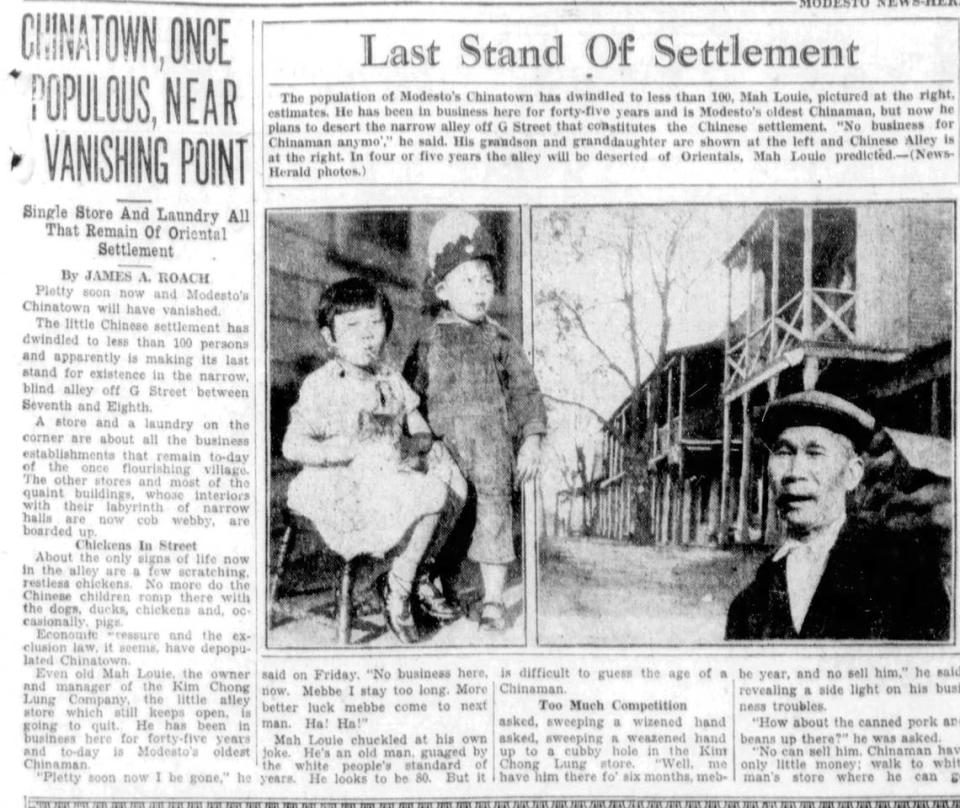
The Bee’s role in covering Modesto’s racist past
The students dug into the archives of the Modesto Bee in search of historical insights into Modesto’s past.
While the public archives lacked 19th-century images of Chinese individuals residing in Modesto, they did contain photographs of buildings from that era.
One notable discovery was an image of a Chinese man superimposed onto a photo of Chinatown in the early 20th century, featured in a 1929 Modesto Bee article. The headline of the article reads, “Chinatown, Once Populous, Near Vanishing Point.”
The Bee documented “Anti-Chinese” meetings held in Turlock in 1886, highlighting the prevailing sentiments of the time.
An 1886 article in the Bee said, “It’s time for the Chinese to go back to China.”
In the same year, the Bee published an article advocating for the commencement of a Chinese exodus from Modesto.
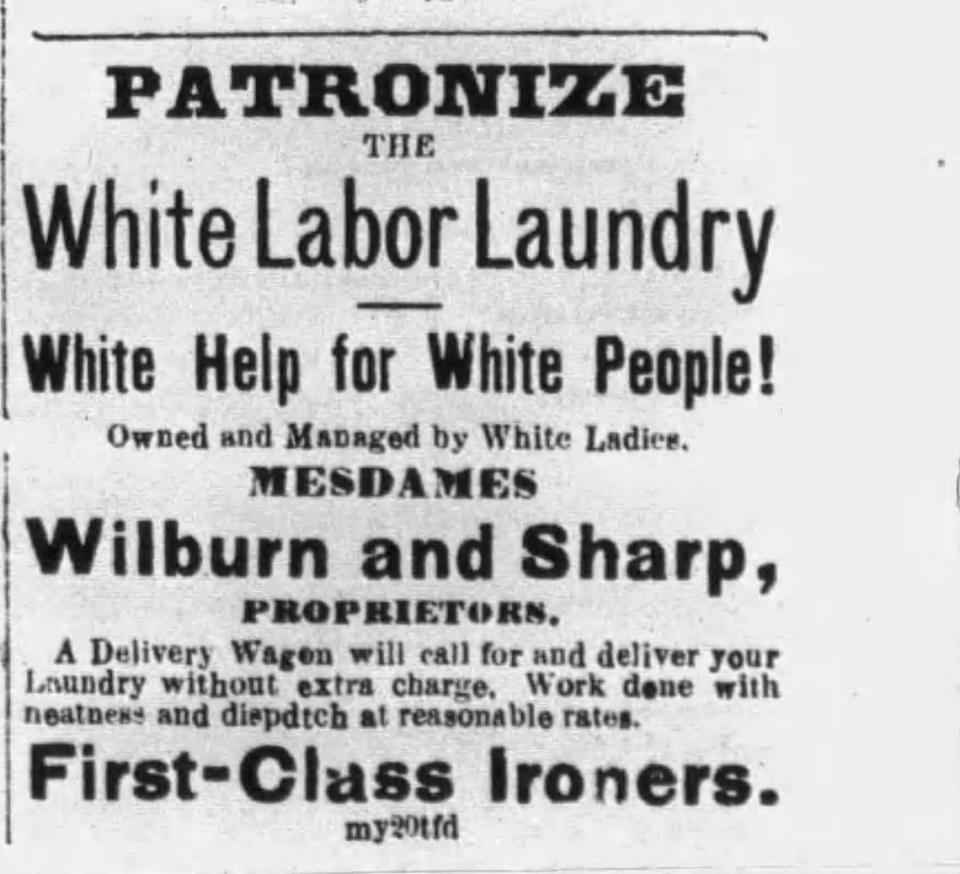
The Bee also ran advertisements for white-owned laundries, a response to Chinese residents who owned laundries that were eventually confined to a designated area due to zoning regulations.
In 1947, the Bee featured an advertisement promoting “Beautiful Highly Restricted” homes for sale, in reference to restrictive covenants that limited occupancy and ownership to white people.

Donna Leigh, another student who worked on the project, said she was shocked by the amount of anti-Asian sentiment found in advertisements and articles. She noted how mass media greatly influenced communities and officials, contributing to everything from public policy to neighborhood layouts.
“These attitudes were deeply ingrained in the mainstream culture of the time, and something so widespread doesn’t disappear when discriminatory laws and practices are abolished,” Leigh, 24, said.
The past’s enduring legacy
The central message conveyed by the exhibit is the enduring relevance of the past in shaping the present.
“None of us believe that the history was right here. We always think of history as somewhere else, in Washington D.C., going through a historic site. But we’re right here,” Kerr said.
The disappearance of Chinatown has resulted in the absence of a Chinese community in Modesto, said Kerr.
Likewise, the legacy of the airport neighborhood persists in the form of a marginalized community located outside the city limits, lacking essential services.
Recently, Leigh moved back to the Lodi area, where she encountered explicit racial discrimination when her building manager admitted to refusing to lease to Black people and discarding their applications.
“This happened in the year 2024,” Leigh said. “It’s not just my apartment building that engages in modern-day segregation. People of color today continue to face extreme discrimination in the housing and rental market.”
Leigh said the best thing you can do is educate yourself.
“I want people to understand the weight of modern segregation,” she added.
